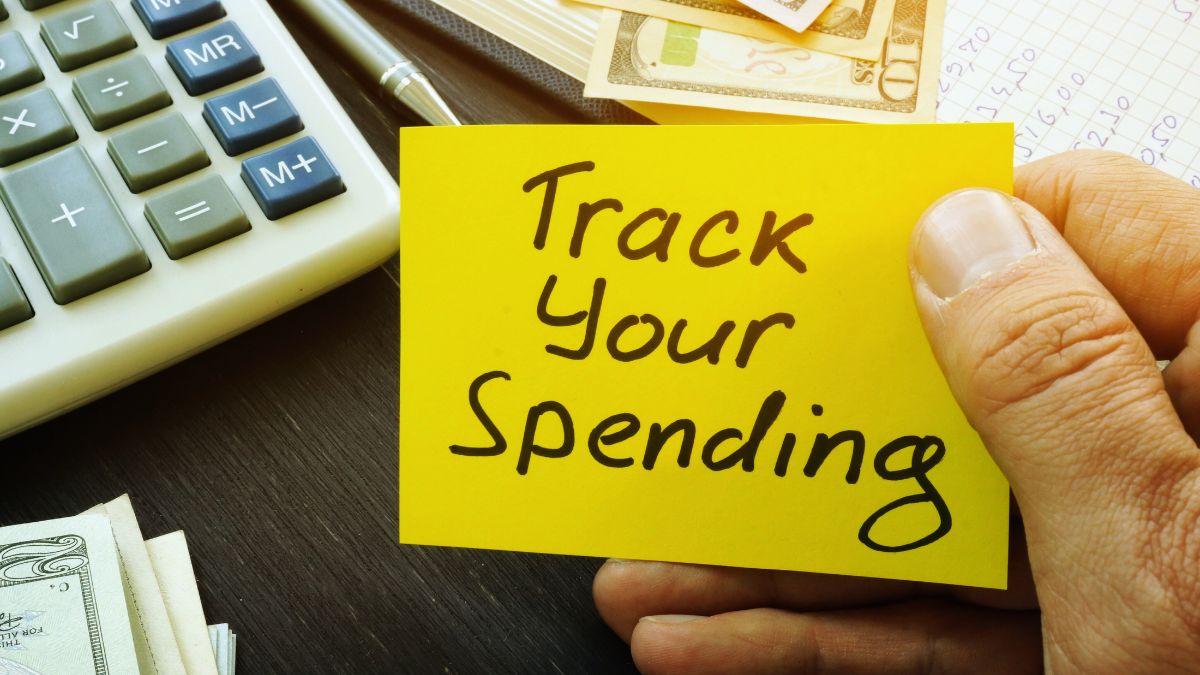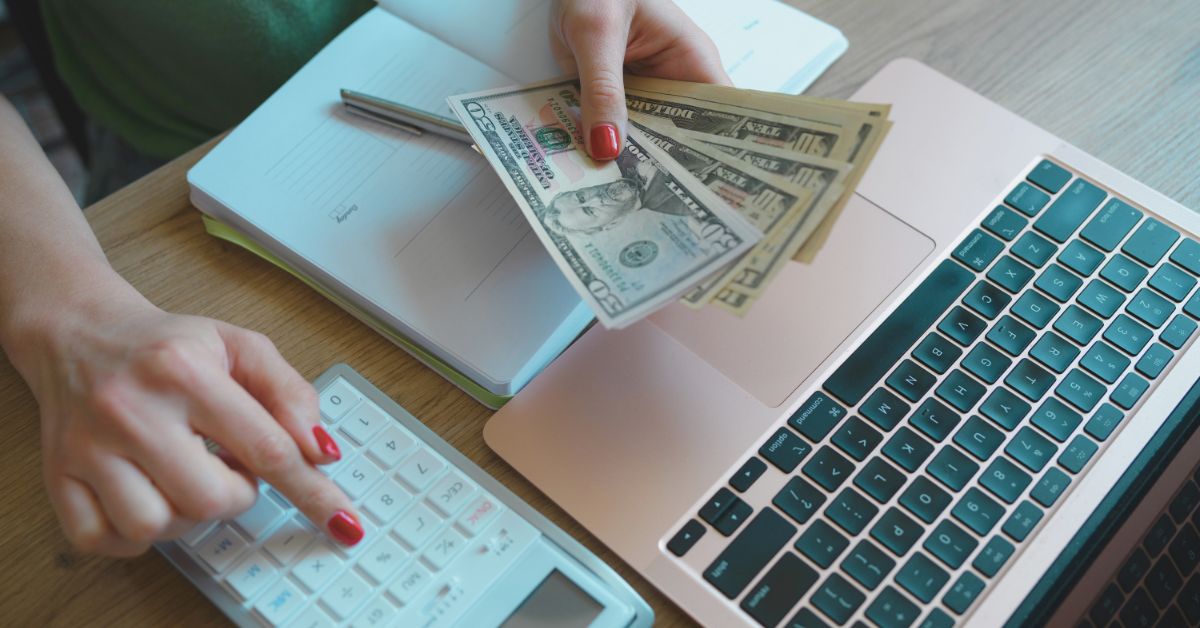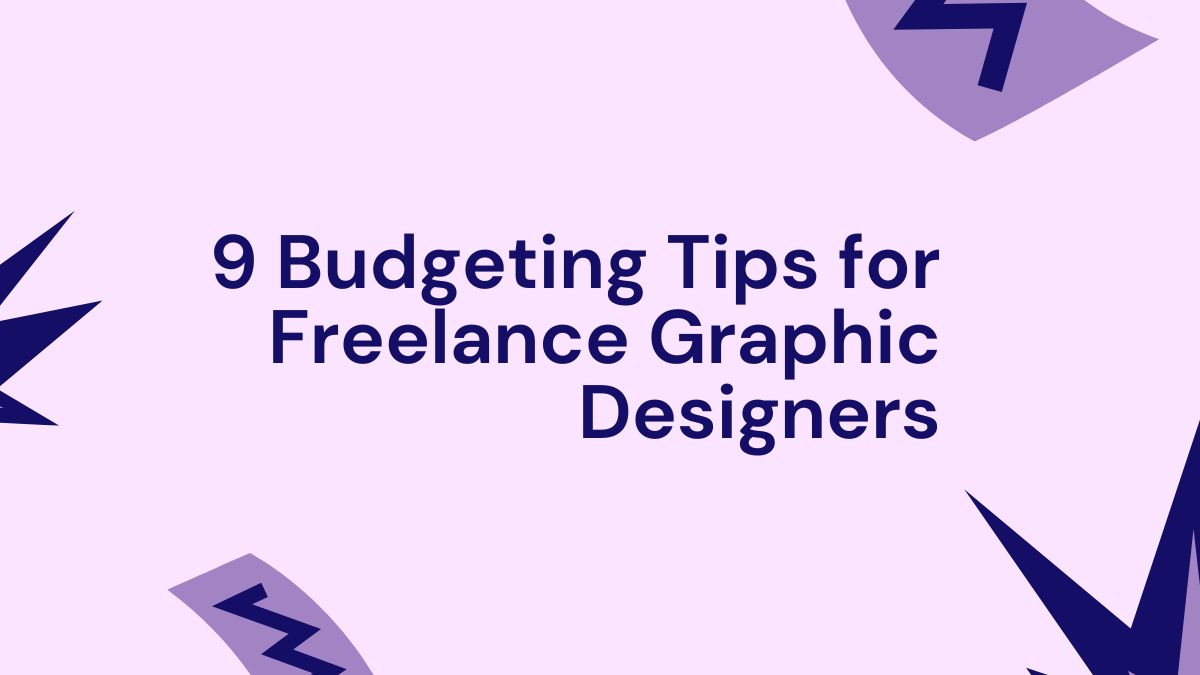Freelancing as a graphic designer offers incredible freedom and creative control. You will also have to manage your finances, which can feel like navigating a maze of complicated decisions. Irregular income, fluctuating expenses, and the need to invest in tools and software can make budgeting a challenging task.
But fear not! By using the right strategies, you can turn your financial uncertainty into a solid foundation for a successful creative career. To help freelance graphic designers budget effectively, here are nine tips:
1. Track Every Rupee

Budgeting is all about understanding where your money goes. Keeping track of all your income and expenses is the first step. Use a spreadsheet, budgeting app (like Mint, YNAB, or dedicated freelance finance apps), or even a good old-fashioned notebook. Record everything, from client payments and software subscriptions to coffee runs and office supplies. This detailed tracking will reveal your spending patterns and highlight areas where you can cut back.
2. Separate Business and Personal Finances
Mixing personal and business finances is a recipe for confusion and potential tax headaches. Open a dedicated business bank account and credit card. This separation simplifies bookkeeping, provides a clearer picture of your business’s financial health, and makes tax preparation much easier.
3. Create a Realistic Budget

Based on your tracking data, create a budget that reflects your actual income and expenses. Be honest about your spending habits. You should allocate funds for essential expenses like rent, utilities, food, and transportation. Then, allocate funds for business expenses, including software subscriptions, hardware upgrades, marketing, and professional development.
- Rent, internet, and software subscriptions are examples of recurring costs that remain relatively constant.
- Travel, marketing, and office supplies are all variable expenses that fluctuate depending on your workload and lifestyle.
- Every month, save a portion of your income as an emergency fund. This will provide a safety net for unexpected expenses or periods of low income.
4. Plan for Irregular Income
Freelance income is rarely consistent. To manage this variability, calculate your average monthly income over the past few months. Then, create a budget based on this average, rather than relying on the highest-earning months.
- During high-earning months, set aside a portion of your income to cover expenses during slow months.
- Make sure your clients pay on time to ensure a steady cash flow.
5. Prioritize Essential Business Expenses
Don’t overspend on unnecessary tools and software, but invest in what you need.
- Maintain a regular evaluation of your software subscriptions. Do you need all those features? Can you find a more affordable alternative?
- Prepare for hardware upgrades, but don’t feel compelled to buy the latest models. Focus on what you truly need.
- Attend industry events, build your online presence, and run targeted ads as part of your marketing and networking budget.
6. Set Aside Money for Taxes
Freelancers are responsible for paying their own taxes. Calculate your estimated tax liability and set aside a percentage of each payment you receive. This will prevent a large tax bill at the end of the year.
- Freelancers are generally required to pay estimated taxes on a quarterly basis in a number of jurisdictions.
- Make sure you consult a tax professional who has experience with freelancers or self-employed individuals.
7. Negotiate Payment Terms and Rates
Don’t be afraid to negotiate your rates and payment terms with clients. Clearly communicate your value and set realistic expectations.
- Instead of charging hourly rates, charge based on the value you provide.
- The payment of upfront deposits ensures payment and covers initial expenses before a project is started.
- A clear and comprehensive contract should outline the scope of the project, the payment terms, and the deadline for the project.
Read More:
- Best Loan Options For Every Budget – A Comprehensive Review
- What is the 50/30/20 Budgeting Rule? A Detailed Guide
8. Invest in Professional Development

Continuously improve your skills and knowledge to stay competitive. Invest a portion of your budget in online courses, workshops, and conferences.
- Check out Skillshare, Udemy, and Coursera for affordable online learning platforms.
- Get to know other designers by attending industry events.
9. Regularly Review and Adjust Your Budget
Your budget is a living document that should be reviewed and adjusted regularly. As your income and expenses change, your budget should adapt accordingly.
- Track your progress and identify areas for improvement by reviewing your budget monthly.
- Reassess your financial goals every year and adjust as necessary.
FAQ
Q: How much should I set aside for taxes as a freelance graphic designer?
A: The amount you need to set aside for taxes depends on your income and location. A general guideline is to set aside 25-30% of your net income. However, it’s best to consult with a tax professional for personalized advice.
Q: What are some essential tools for tracking my freelance income and expenses?
A: There are many tools available, including:
- Spreadsheets (Google Sheets, Microsoft Excel)
- Budgeting apps (Mint, YNAB, Personal Capital)
- Freelance finance apps (QuickBooks Self-Employed, FreshBooks)
Q: How can I handle late payments from clients?
A: Here are a few tips:
- Send a friendly reminder.
- Follow up with a phone call.
- Review your contract for late payment terms.
- Consider hiring a collection agency if necessary.
- Clearly state in your contract what actions will be taken regarding late payments.
Q: Should I invest in a dedicated workspace?
A: Investing in a dedicated workspace can boost productivity and professionalism. However, it’s not always necessary, especially when you’re starting out. Evaluate your needs and budget before making a decision.
Q: How do I calculate my freelance rate?
A: Consider factors like your experience, skills, the complexity of the project, and your operating expenses. Research industry rates and calculate your desired hourly or project rate. Remember to factor in the cost of your time, software, and other overhead costs.
By implementing these budgeting tips, you can take control of your finances and build a sustainable and fulfilling freelance graphic design career. Remember, financial stability is not just about making money; it’s about managing it wisely.

